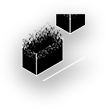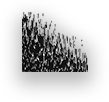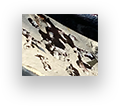trashpicking.cloud Version 1.0
This website art project provides a trash picking field for digital trash/rubbish, i.e. images that you can click/tap to collect.
Every time you pick a piece of digital trash/rubbish, you have a little chance of deleting the file on the server. Whether this deletion occurs is randomly determined.
This difficulty of deleting data metaphorically reflects how data may be duplicated intentionally or unintentionally before you delete it, so that a single instance of binning a trash piece may not clear all associated data at once.
The site measures the size of the image data generated for the project as well as the estimated carbon emissions induced by visiting the website each time. As you clear data trash, the website becomes less heavy and emits slightly less CO2e. *
Not all the data associated with the project is available to delete at the launch of the website. At some points during the exhibition period of Passing Data - Upcycling the Digital, additional data trash (images) will be ‘dumped’ into the field.
— * Note for carbon emissions measurement —
For this version, the displayed size of the files deleted and the carbon emissions associated with the website visit are not measured in exact precision, but rather it is done through estimation.
For this, the size of all the images on the site has been calculated and divided by the number of images in the database of the website, to get the average size of one image in the database. Hence, every time a file is deleted from the website, an average image size is subtracted from the size of the entire trash field/database.
Also, this calculation method of estimation applies to the reduced carbon emissions mentioned on the site. The estimated carbon emissions for visiting the website per session have been calculated using https://www.websitecarbon.com where the data is hosted on one.com server. Then the average file size of an image of the database will be used to extrapolate and estimate the reduction of carbon emissions that can be made with the deletion of a file.
— Credits —
This website is an initial prototype of the website art project trashpicking.cloud by Shinji Toya.
Many images on the sites are sampled and modified versions of images provided by artist Yehwan Song as part of the Copy Paste Waste project by Prater Gallery. Also, Shinji Toya modified digital images that his life in the summer of 2024 generated - to add to the trash-picking field.
trashpicking.cloud was created for the exhibition: Passing Data - Upcycling the Digital, Prater Gallery
22.11.2024 – 28.02.2025
×

























































